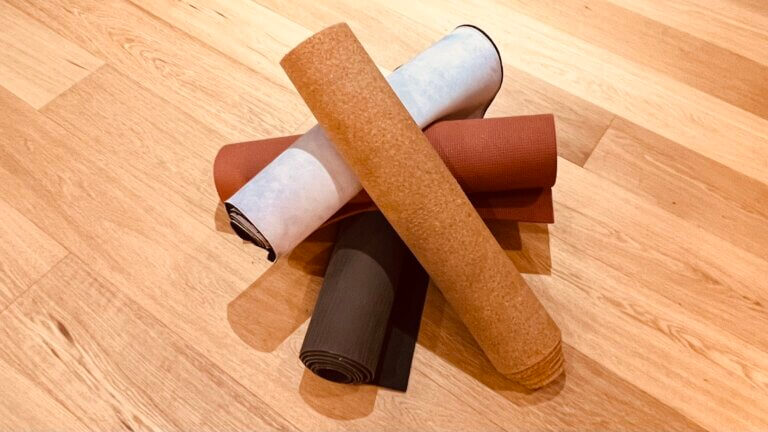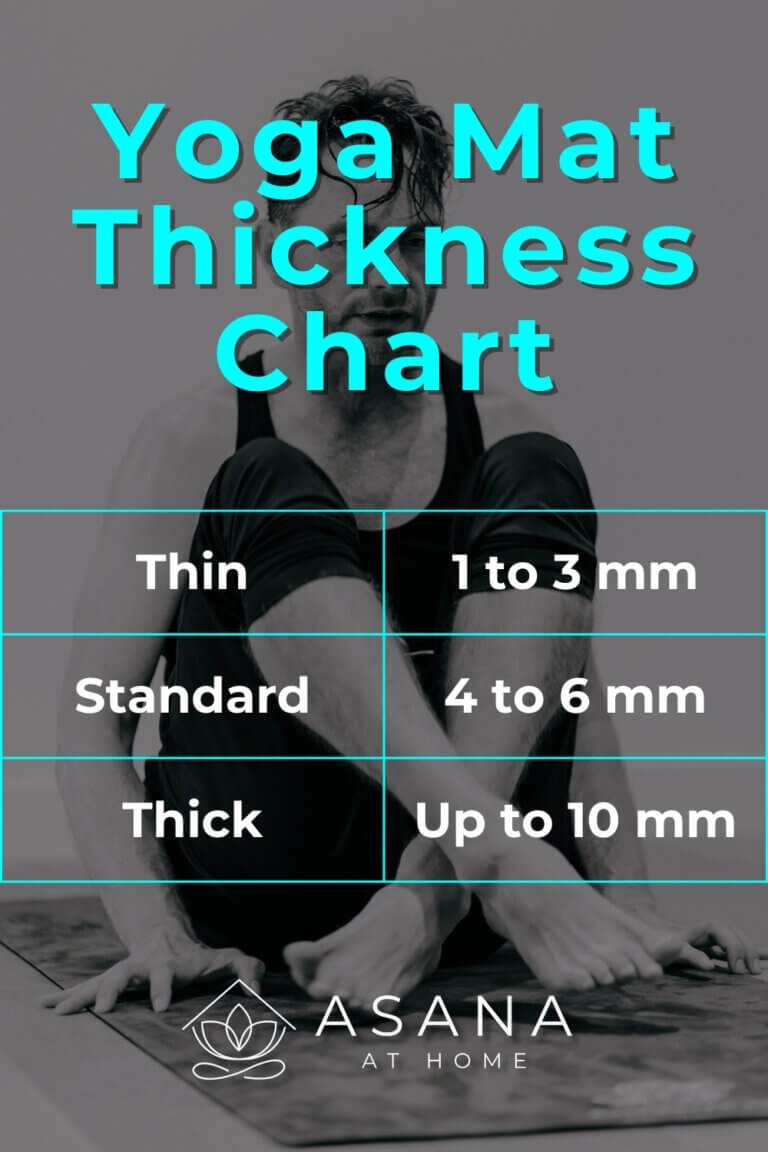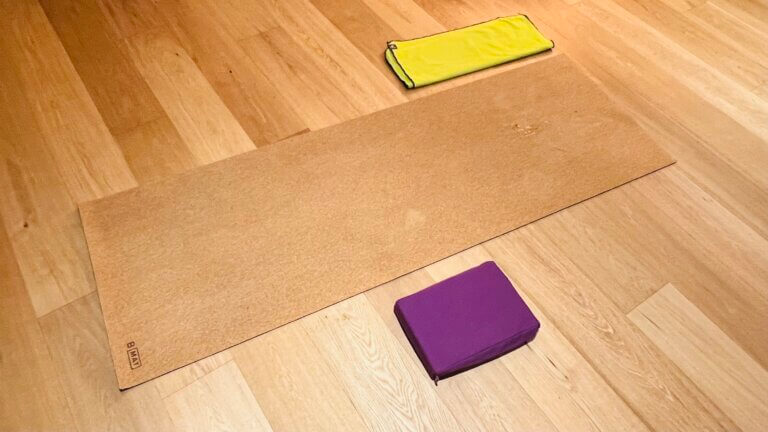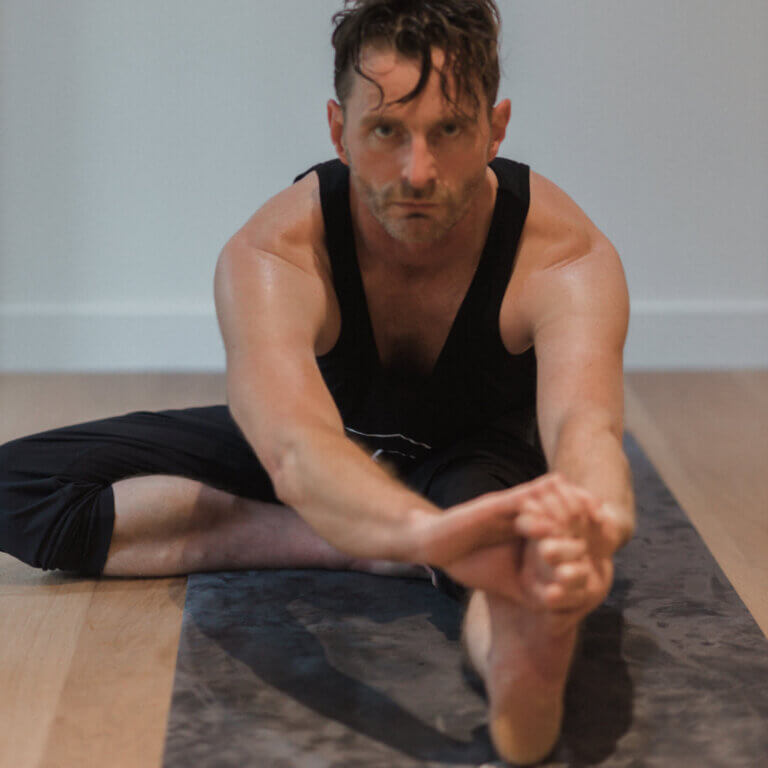Home » Yoga Blog » Beginner Yoga Blog » Yoga Mat Size Chart: A Guide to Your Perfect Mat
Yoga Mat Size Chart: A Guide to Your Perfect Mat
Embarking on the path of yoga brings with it the need for a perfect ally – your yoga mat. The yoga mat size chart is not just a list of dimensions; it’s a gateway to finding a mat that aligns perfectly with your yoga journey. I created this guide to help you navigate the intricate details of the yoga mat size chart, unveiling the nuances of length, width, and thickness suitable for your practice style and body type. And it doesn’t end there. I also cover different Yoga Mat Materials and specializations for various Yoga Styles.
My aim is to aid you in decoding this chart, leading you to a mat that supports your every pose and breath and enhances your overall yoga experience. Let’s delve into the world of yoga mats, where every material and measurement has a purpose, and every choice brings you closer to the perfect mat.

Navigating the Yoga Mat Size Chart: Standard and Custom Dimensions
Regarding yoga mats, size does matter, and understanding the standard and custom options available can significantly impact your practice.
How long are yoga mats, and how wide? The standard yoga mat size measures 68 inches in length and 24 inches in width (173 x 61 cm), a dimension designed to accommodate an average-sized individual comfortably. Some standard mats are up to 72″ long. However, not all yogis are the same, and neither are their needs.
You should choose the ideal yoga mat size for your body type and personal comfort. While the standard size of a yoga mat works well for many, exploring different sizes and longer or wider options can transform your practice, offering freedom and space.
When choosing your best yoga mat size, consider using a tape measure to align the dimensions with your body type and personal comfort. While the standard size suffices for most, a tape measure can help you determine if a longer or wider option would better suit your practice, providing additional freedom and space.

Longer Yoga Mats for Taller Yogis
For tall people, standard mats may fall short; this is where custom sizes come into play. Extra long mats extending 80 to 85 inches long (203 or 216 cm) cater to those over six feet tall (1.83 meters). This ensures no body part is left unsupported during practices like the downward-facing dog or savasana.
These extra inches of a larger mat provide ample space, allowing full-body stretches without worrying about hands or feet hanging off the edges.
The Benefits of Extra Wide Yoga Mats
Width plays a crucial role, too, especially in crowded classes where personal space can be limited. Wider mats, measuring up to 36 inches (91 cm), offer additional room for comfort, safety, and alignment.
An extra wide yoga mat is particularly beneficial for yogis with broader shoulders or those who prefer additional space to spread out during their practice.
Yoga Mat Thickness and Comfort

Thickness in a yoga mat isn’t just a matter of cushioning; it’s a critical factor that can define the comfort and effectiveness of your yoga practice.
The standard mm thickness for yoga mats typically ranges between 4mm and 6mm. This range strikes a balance, offering enough padding to cushion the joints during cat-cow yoga poses while providing a firm enough surface for stability in standing poses.
Thicker Mats
For yogis seeking extra comfort, especially those practicing gentler forms of yoga such as Yin Yoga or Restorative, thicker yoga mats — sometimes up to 10mm — can be a game-changer. A thicker mat provides substantial cushioning, which can be exceptionally comforting for sensitive joints or when practicing on a hard floor.
However, it’s worth noting that an extra thick mat might not be ideal for more dynamic practices, as they can compromise stability and balance.
Thinner Mats
On the other end of the spectrum are thinner mats, often ranging from 1-3mm. Often, these are travel mats due to their lightweight and easy-to-pack nature. While they offer less cushioning, they are excellent for yogis who prefer a stronger connection to the floor, which can benefit balance and rooted poses.
Ultimately, the choice of mat thickness is informed by your individual needs, the type of yoga you practice, and where you practice it.
Whether you seek extra cushioning for comfort or a thinner mat for ease of travel and closer floor connection, a mm yoga mat is just the right size for your practice.
Materials and Composition

The material of a yoga mat is not just about aesthetics; it significantly influences grip, durability, and eco-friendliness.
- A typical yoga mat is commonly made from PVC (polyvinyl chloride) and is prized for durability and stickiness. However, environmental and health concerns have led many to seek alternatives to the most common materials.
- Natural rubber mats offer a sustainable choice, providing excellent grip and a bit of give, which is ideal for vigorous practices.
- For those with latex allergies, TPE (thermoplastic elastomer) mats are a synthetic rubber alternative, combining lightweight properties with good traction.
For a Detailed look at yoga mat materials, we recommend reading our article Yoga Mat TPE vs PVC: Which is Best and How to Choose?
You Love Yoga, We Love Yoga—Let’s Stay Connected
Get yoga tips, a little inspiration, and friendly emails—because yoga is better with friends.
Eco-Friendly Materials and Composition
Cork yoga mats have gained popularity for their natural texture and sustainability. They offer a unique feel, with the added benefit of being antimicrobial. A cork mat tends to get grippier when wet, making it suitable for hot yoga classes.
Another eco-friendly option is mats made from jute or organic cotton, which are biodegradable and offer a more traditional, earthy experience. These natural materials are often combined with eco-friendly compounds to enhance durability and grip.
The ideal choice of material can also reflect personal values, especially for those looking to reduce their environmental impact. Each material offers a different balance of grip, cushioning, and ecological footprint. Allowing yogis to choose a mat that aligns with their practice, physically and philosophically.
Specialized Mat Types for Different Styles of Yoga

Yoga mats are not one-size-fits-all; different styles of yoga can benefit from specialized mat types.
- Mats with excellent grip and stability are essential for dynamic practices like Ashtanga Yoga or Vinyasa. These usually feature a sticky, non-slip surface to accommodate the fast-paced transitions and maintain alignment.
- In a hot yoga studio (Bikram yoga), where sweat is a factor, suede yoga mats with moisture-wicking properties or ones that pair well with a non-slip yoga towel are ideal. A sticky mat ensures safety and stability in yoga postures, even in heated sessions.
- Comfort is paramount for meditative or restorative yoga practices like Yin Yoga. Here, thicker mats with extra cushioning support prolonged periods of seated or lying poses, making the practice more comfortable, especially on hard floors.
- Travel yoga mats cater to yogis on the go. They are typically thinner mm mat and lighter, making them easy to pack and carry, yet durable enough to handle different terrains.
Selecting a yoga mat tailored to your style of yoga practice can significantly enhance your experience, providing the right balance of comfort, stability, and functionality.
Personal Preferences and Body Types
Choosing a new yoga mat is a profoundly personal decision, influenced significantly by individual preferences and body types.
For those with a taller or broader frame, a longer and wider mat can provide extra space to practice comfortably. In contrast, individuals with a more petite build might find standard-sized mats more than adequate.
Your comfort is also a key factor. Some yogis prefer a firmer mat for balance-focused practices, while others might seek extra padding for joint support. Additionally, consider your sensitivity to textures and materials, as the feel of the mat can impact your comfort during practice.
The perfect yoga mat should ultimately accommodate your body type and personal preference, ensuring a comfortable and supportive practice.
This alignment between your physical needs and the mat’s features is crucial for a fulfilling and effective yoga experience.
Practical Considerations for Choosing a Yoga Mat
Practical aspects such as weight, portability, and budget are crucial when selecting a yoga mat.
A lightweight, easy-to-carry mat is essential for yogis who travel or commute. However, a heavier, more durable mat might be suitable if your practice is stationary or at the local studio.
Budget also plays a role; while premium mats offer additional features, there are budget-friendly options that provide good quality without a hefty price tag. Additionally, consider the storage space for your mat and whether its size and thickness align with your living or workout space.
In summary, the practicality of your yoga mat should complement your lifestyle, ensuring it’s a convenient and accessible tool in your yoga practice.
Mastering the Yoga Mat Size Chart for Your Ideal Yoga Mat Size and Comfort
The yoga mat size chart is a valuable guide in selecting the ideal dimensions for your mat. It details standard sizes, typically 68 inches in length and 24 inches in width (173 x 61 cm), suitable for most practitioners.
However, the chart also presents custom options for those whose stature exceeds these standard dimensions. These include longer mats, reaching up to 85 inches (216 cm) for taller yogis, and wider mats, offering additional space for broader frames.
By consulting the yoga mat size chart and, perhaps, a yoga teacher, you can make an informed decision. Ensuring your right yoga mat perfectly accommodates your body type and enhances your practice.
And don’t forget to get a Mat Carrying Strap. 🙂
Source: Yoga Mat


